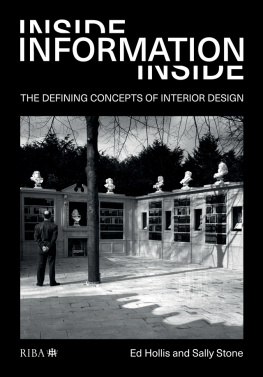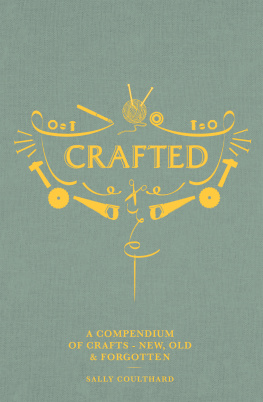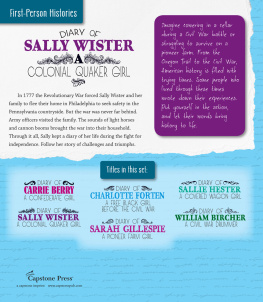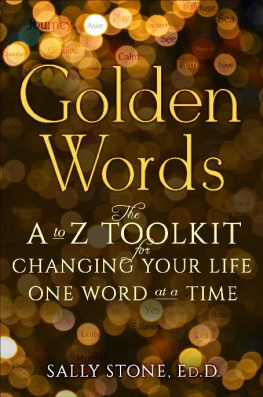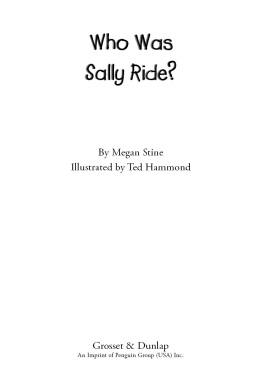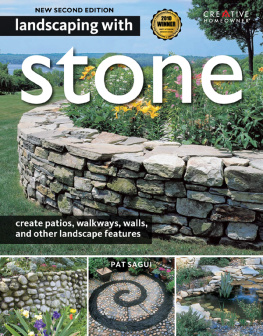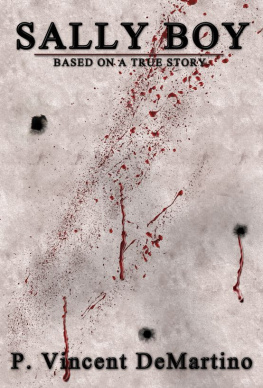Stone Sally - Inside Information
Here you can read online Stone Sally - Inside Information full text of the book (entire story) in english for free. Download pdf and epub, get meaning, cover and reviews about this ebook. year: 2022, publisher: RIBA Publications, genre: Religion. Description of the work, (preface) as well as reviews are available. Best literature library LitArk.com created for fans of good reading and offers a wide selection of genres:
Romance novel
Science fiction
Adventure
Detective
Science
History
Home and family
Prose
Art
Politics
Computer
Non-fiction
Religion
Business
Children
Humor
Choose a favorite category and find really read worthwhile books. Enjoy immersion in the world of imagination, feel the emotions of the characters or learn something new for yourself, make an fascinating discovery.
- Book:Inside Information
- Author:
- Publisher:RIBA Publications
- Genre:
- Year:2022
- Rating:3 / 5
- Favourites:Add to favourites
- Your mark:
- 60
- 1
- 2
- 3
- 4
- 5
Inside Information: summary, description and annotation
We offer to read an annotation, description, summary or preface (depends on what the author of the book "Inside Information" wrote himself). If you haven't found the necessary information about the book — write in the comments, we will try to find it.
Inside Information — read online for free the complete book (whole text) full work
Below is the text of the book, divided by pages. System saving the place of the last page read, allows you to conveniently read the book "Inside Information" online for free, without having to search again every time where you left off. Put a bookmark, and you can go to the page where you finished reading at any time.
Font size:
Interval:
Bookmark:

THE DEFINING CONCEPTS OF INTERIOR DESIGN
Interiors have been addressed in print through many different lenses: in histories and theories of private and public life, from constructional details to paint magic to historic conservation.
This collection of essays is designed to transcend these boundaries and genres to provoke practitioners, students, and all of us who live in them, to reconsider the basic concepts and vocabularies of interiors.
Written as an accessible and comprehensive thesaurus, or treasury of the interior, Inside Information will deliberate upon key terms; from Ante-room to Zeitgeist, covering areas of study from the very practical Structures, Decoration, the Urban Interior - to the philosophical; Gender, Light, and Philosophy.
Through 26 carefully researched entries, Hollis and Stone provide provocative inspiration to all those involved with the interior, as well as exploring etymologies that explain the origins of words and practices, and speculations upon current trends that point towards their future potential.
Rather than proposing definitions, these entries aim to frame the debates that surround the subjects, inviting the reader to engage with and question, rather than to accept, what an interior is, and could be.

Ed Hollis and Sally Stone
Ed Hollis has worked as an architect in Sri Lanka and in the practice of Richard Murphy in Edinburgh. He is now Professor of Interior Design at Edinburgh College of Art, University of Edinburgh. The author of The Secret Lives of Buildings (Portobello Books, 2009), The Memory Palace: A Book of Lost interiors (Portobello Books, 2013), How to Make a Home (School of Life, 2016) and a guide to the oldest house in Edinburgh, Hollis uses storytelling to explore how buildings, and the spaces that occupy them, are told and retold, evolving and surviving from generation to generation, overtime.
Sally Stone is an academic and an interiorist. She has been designing, drawing, formulating ideas and writing about interiors and adaptive reuse for 30 years. Stone is the author of UnDoing Buildings (Routledge, 2019), and co-author of ReReadings Volumes 1+2 (RIBA Publications, 2004, 2018), Emerging Practices in Pedagogy (Routledge, 2021) and the forthcoming Remember Reveal Construct (Routledge). For the last 20 years or so she has dragged her family around the best architecture and interiors in Europe, telling the children that it was a perfectly normal way to spend a summer holiday.
We would like to acknowledge the hard work and patience of our editorial team, notably Clare Holloway and Scarlet Furness, as we evolved the ideas for this book. We acknowledge the support of Edinburgh College of Art in funding the rights to many of the images. We also acknowledge the fortitude of Dominic Roberts, and the resilience of Reuben, Ivan and Agnes Roberts. Finally, we would like to acknowledge the many students, both past and present, for whom this book has been written, and by whose questions it has been provoked.

Fig 0.1 Illustration from Camille Flammarion, Latmosphere: meteorofogie populaire (The Atmosphere: Popular Meteorology), 1888: the world as an interior.
DOI: 10.4324/9781003277835-1
Interiors are everywhere. From the kitchen to the throne room, from the open-plan office of the 1960s to the home-workspace of the digital age, and from the generic mall to the bespoke boutique, we spend most of our time inside.
But even when we go outside, we are inside, too: in the interiors of countries, inside what the philosopher Peter Sloterdijk calls the World Interior of Capital' or what our ancestors imagined was the interior of the crystal spheres of the heavens. Shut your eyes, and you will find yourself in your own interior, too, crowded with thoughts, memories, passions and moods. You will always be inside.
But like those moods and passions, like an ever-changing landscape, like money itself, the interior is the most ephemeral of subjects. Interiors usually change faster than the buildings that contain them, leaving little behind. Any attempt to fix them - in writing, paint or silver nitrate - is, surely, impossible.
But still we try. Interiors appear in images - paintings, drawings, photographs, or writing - but they are often secondary: the scenery, rather than the play; the frame, rather than the picture. Indeed, as the historian Mario Praz remarked, there is something a little odd about people who have documented everything about the interiors they live in. After all, if they are all around us, all of the time, why bother?
Historically the preserve of the amateur, the self-educated decorator, the glossy magazine and the anti-intellectual ethos of art school, all too often the subject of derision or sexist dismissal, Interiors has in recent decades become a discipline: a way of seeing and knowing the world - from the inside. The interior point of view can be used to understand, as well as to design, the ways in which we live inside the world. The interior itself (and its design) can be understood through, and may inform, diverse theoretical frameworks, from feminist scholarship to decolonial historiography, sustainability to semiotics.
Consequently the interiorist must know about structures, sustainability, ergonomics, gender, climate, colour, organisation, decoration, history and topography. They must know enough to work with practitioners across graphic design, architecture, urban design, conservation, psychology, healthcare and drama. At the same time, they must be able to speak to these other disciplines from a position of strength, confidence and knowledge.
The interior is no longer just the scenery for the play - it can be its subject, too. As such, we need to know-or to attempt to know - what it is. This book is a contribution to that end, adding to a growing body of knowledge about the interior: its construction in the present, its history in the past and its possibilities in the future - explored in histories and theories of private life, gender or celebrity, as well as in primers for the practitioner.
Here we extend and connect these genres by introducing the reader to key interior terms. As in the English alphabet, there are 26, running like a lexicon from Ante- to Zeitgeist. But unlike Mark Hinchmans 1983 Dictionary of Interior Design, this inside ABC makes no pretence of being exhaustive. Indeed, its writing involved the laying out and the casting out of hundreds of words: Salon never made it, and neither did architecture, hygge or digital.
Fifty years after Hinchman, we have essayed a lexicon for a time in which comprehensive lexica are impossible - or, at least, useless. The average smartphone can access as much, if not more, knowledge than was contained within any dictionary in 1983; even the once-omniscient Oxford English Dictionary has become a snapshot, obsolete as soon as it is launched, of a global language on the move: online and across thousands of post-colonial variants.
This is a lexicon for a discipline in a time in which disciplines are becoming impossible, too. Increasingly, professions from medicine to building construction rely less on fixed territories of knowledge and more on soft skills, including collaborative problem-solving, and the ability to find things out rather than know them.
Next pageFont size:
Interval:
Bookmark:
Similar books «Inside Information»
Look at similar books to Inside Information. We have selected literature similar in name and meaning in the hope of providing readers with more options to find new, interesting, not yet read works.
Discussion, reviews of the book Inside Information and just readers' own opinions. Leave your comments, write what you think about the work, its meaning or the main characters. Specify what exactly you liked and what you didn't like, and why you think so.

